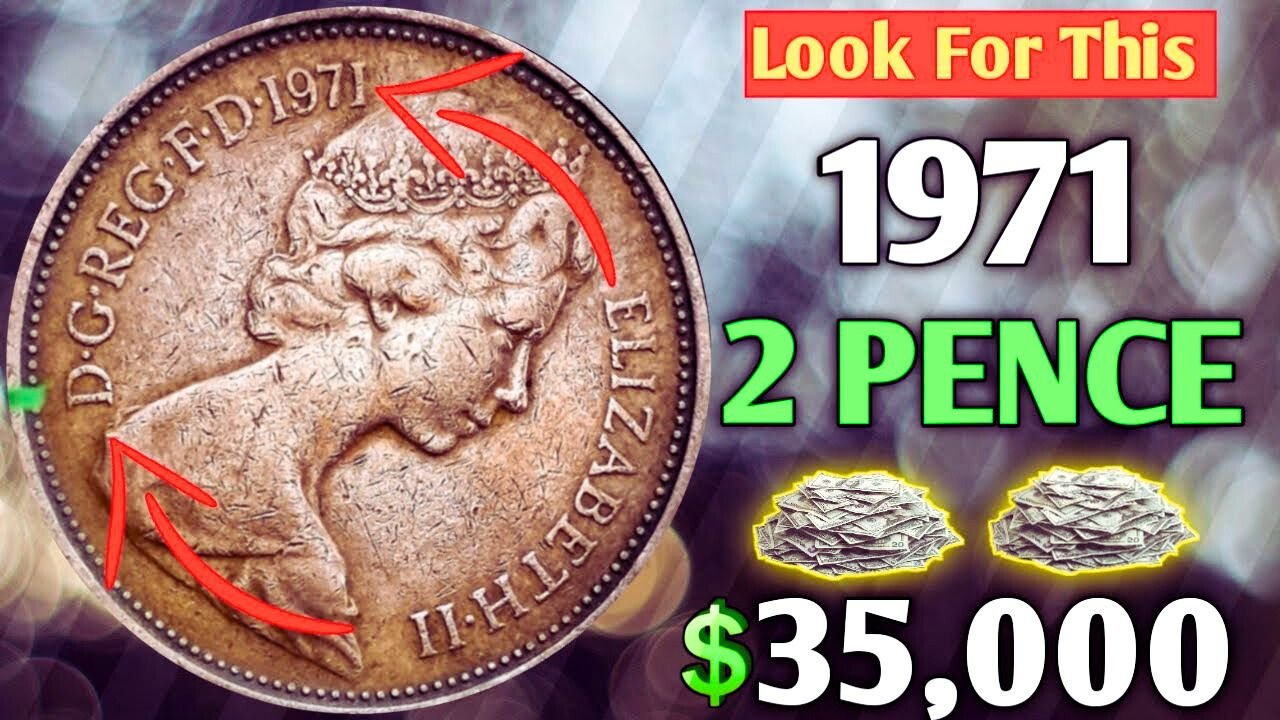In the world of coin collecting, some old bits of change can turn into real treasures. Take the 1971 UK Elizabeth II New Pence 2p coin, for example. Back when Britain switched to decimal money in 1971, these coins were everywhere. But a rare error version has collectors buzzing today. This special coin, with its odd mistake, can fetch big sums at auctions. Experts say it’s one of those finds that could be hiding in your loose change or family heirlooms. With the coin market heating up in 2025, now’s the time to check your pockets. Stories of everyday folks selling these for hundreds of pounds are popping up more often, making it a hot topic among hobbyists and investors alike.
What Makes the 1971 Error Coin So Special?
The standard 1971 2p coin shows Queen Elizabeth II on one side and says “New Pence” on the other. It was minted to mark the new decimal system, replacing the old pounds, shillings and pence. Millions were made, so most are worth just their face value. But the error version is different. Some coins slipped through with a minting flaw, like a double strike or odd alignment, making them stand out. These mistakes happened at the Royal Mint during that busy year. Collectors prize them because they’re hard to find in top condition. Recent sales show uncirculated error examples going for £500 or more. If you’ve got one with a clear error, like an off-centre design or extra metal blobs, it could be your lucky day. The coin’s bronze makeup and historical link to decimal day add to its charm.
How Much Is It Really Worth?
Values depend on the coin’s state and the exact error. A basic 1971 New Pence 2p in good nick might fetch a quid or two. But error ones are where the money is. For instance, a coin with a rotated die error has sold for over £300 lately. To give you an idea, here’s a quick table of recent auction prices for these rarities:
| Condition | Error Type | Average Sale Price (£) |
|---|---|---|
| Good | Off-centre | 150 |
| Fine | Double strike | 350 |
| Uncirculated | Rotated die | 600 |
This table is based on data from UK auction houses in the past year. Remember, prices can vary, so get it checked by a pro. Factors like shine and scratches play a big part. With inflation and more people collecting, these figures might climb higher by next year.
Spotting the Real Deal in Your Collection
Looking for these coins isn’t hard if you know what to watch for. Start by checking the date, 1971, on the side with the queen. Then flip it over and look at the “New Pence” wording. Errors show up as blurry letters or uneven edges. Feel the weight too, it should be about 7 grams. Many fakes are out there, so compare with pictures from trusted books. If you’re new to this, join a local coin club for tips. Some folks have found them in old jars or at car boot sales. Just last month, a chap in Manchester sold one for £450 after spotting it in his gran’s tin. Stories like that keep the hunt exciting. Keep an eye on online forums, but always verify with experts to avoid duds.
Why Collectors Are Going Mad for Rare British Coins
Beyond the 1971 error, other UK coins are worth a look. The Kew Gardens 50p from 2009 is a gem, often selling for £150 plus. Or the 1983 2p with the wrong “New Pence” stamp instead of “Two Pence” – that’s a true rarity, fetching up to £700. Even some 20p coins without dates from 2008 go for £50. The fun is in the search. With the economy wobbling, coins offer a solid way to invest. Experts predict the market will grow as more people dig into history. If you’re keen, start small and build your knowledge. Who knows, that dusty box in the attic might hold a fortune.
In summary, the 1971 Elizabeth II New Pence error coin is a reminder that small mistakes can lead to big rewards. As we mark over 50 years since decimalisation, these pieces connect us to the past. Whether you’re a seasoned collector or just curious, give your change a second glance. You might uncover something special. With values rising, it’s a smart time to learn more and perhaps turn a hobby into profit.
Frequently Asked Questions
What is the main error on the 1971 New Pence 2p coin?
The error usually involves minting flaws like off-centre striking or double images, which make the coin unique and valuable.
How can I tell if my 1971 coin is a fake?
Check the weight and details against official images, and consult a coin expert or use a magnifying glass to spot any odd marks.
Are there other rare coins from that era worth looking for?
Yes, coins like the 1983 error 2p or undated 20p from 2008 can also be worth good money if you find them in your collection.
